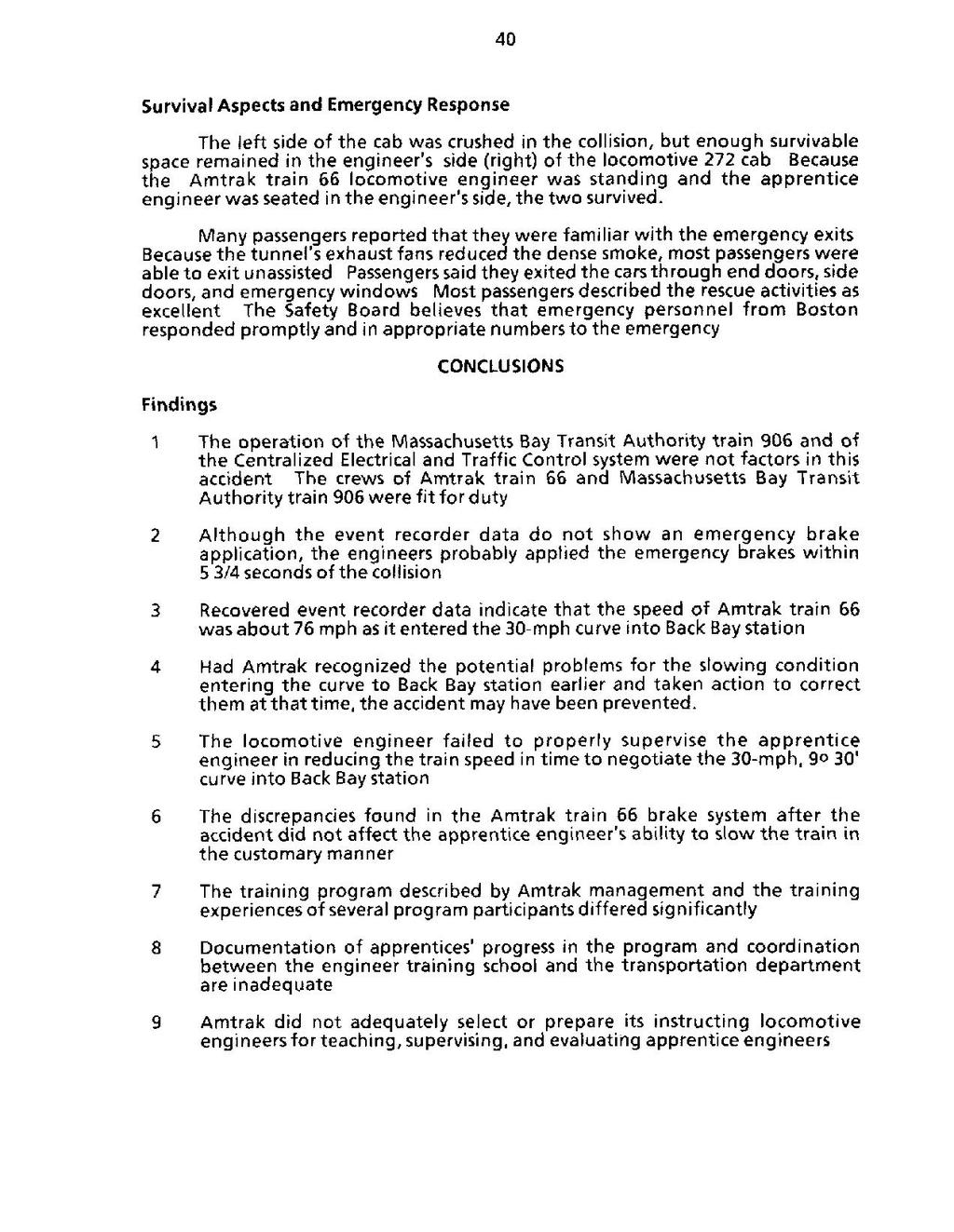40
Survival Aspects and Emergency Response
The left side of the cab was crushed in the collision, but enough survivable space remained in the engineer's side (right) of the locomotive 272 cab. Because the Amtrak train 66 locomotive engineer was standing and the apprentice engineer was seated in the engineer's side, the two survived.
Many passengers reported that they were familiar with the emergency exits. Because the tunnel's exhaust fans reduced the dense smoke, most passengers were able to exit unassisted. Passengers said they exited the cars through end doors, side doors, and emergency windows. Most passengers described the rescue activities as excellent. The Safety Board believes that emergency personnel from Boston responded promptly and in appropriate numbers to the emergency.
CONCLUSIONS
Findings
- The operation of the Massachusetts Bay Transit Authority train 906 and of the Centralized Electrical and Traffic Control system were not factors in this accident. The crews of Amtrak train 66 and Massachusetts Bay Transit Authority train 906 were fit for duty.
- Although the event recorder data do not show an emergency brake application, the engineers probably applied the emergency brakes within 5 3/4 seconds of the collision
- Recovered event recorder data indicate that the speed of Amtrak train 66 was about 76 mph as it entered the 30-mph curve into Back Bay station.
- Had Amtrak recognized the potential problems for the slowing condition entering the curve to Back Bay station earlier and taken action to correct them at that time, the accident may have been prevented.
- The locomotive engineer failed to properly supervise the apprentice engineer in reducing the train speed in time to negotiate the 30-mph, 9° 30' curve into Back Bay station.
- The discrepancies found in the Amtrak train 66 brake system after the accident did not affect the apprentice engineer's ability to slow the train in the customary manner.
- The training program described by Amtrak management and the training experiences of several program participants differed significantly.
- Documentation of apprentices' progress in the program and coordination between the engineer training school and the transportation department are inadequate.
- Amtrak did not adequately select or prepare its instructing locomotive engineers for teaching, supervising, and evaluating apprentice engineers.
